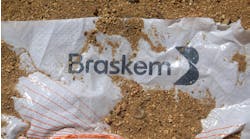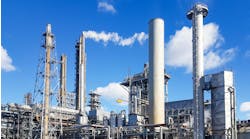A polymer-based membrane infused with a metal oxide network may provide an attractive alternative to energy-intensive distillation, say researchers at the Georgia Institute of Technology (Georgia Tech), Atlanta. The infused membrane separates chemicals better than the untreated membrane and can withstand harsh chemicals without degrading, they add. Moreover, incorporating the treatment into standard membrane manufacturing is straightforward, requires minimal investment in new equipment, and adds little to membrane cost, the researchers claim.
“In practice, using them could produce a 90% reduction in energy cost,” notes Ryan Lively, an associate professor in Georgia Tech’s School of Chemical & Biomolecular Engineering.
“After placing the pre-fabricated membrane inside of our reactor, we simply expose it to metal-containing vapors that infuse themselves inside the membrane material,” says Mark Losego, an assistant professor in the School of Materials Science and Engineering. “This process is called vapor phase infiltration, and it creates a uniform network of metal oxide throughout the polymer membrane. We call it a ‘hybrid’ membrane.”
The team tested the membrane using harsh chemicals such as tetrahydrofuran, dichloromethane and chloroform, and found it remained stable for several months; pure polymer membranes dissolve in minutes.
“Some chemicals that need to be separated are very similar in terms of their size, shape and other properties, which makes them even harder to process using membranes,” Lively explains. “These new hybrid membranes are much more selective. They can separate chemicals that are more similar to each other.” In the tests, the hybrid membranes separated aromatic molecules that differed in size by as little as 0.2 nanometers.
An article in Chemistry of Materials contains more detail.
Future research includes fine-tuning the oxide infusions and making new types of hybrid membranes capable of separating a variety of other chemicals.
“Our infiltration process uses essentially the same chemistries as chemical vapor deposition (CVD). … our initial results are promising, and further optimization of this chemistry would likely be the most productive first step. The Al2O3 chemistry is also amongst the least expensive. However, other chemistries may generate additional value beyond membrane stabilization, including improved separation performance or integrated chemical catalysis,” note the researchers.
Lively and Losego continue: “The current article utilizes well-known test-standards for membrane materials, which enables head-to-head comparisons with other materials. We also explored some proof-of-concept chemical separations, including purifying toluene solvent contaminated with several other alkyl aromatic solvents; we also found that the membranes were effective for alcohol-alcohol separations. As we explore new infiltration chemistries and polymer membrane chemistries, we expect to further refine the separation capabilities of these materials to the point that they can address some of the most challenging molecular separation problems.”
“At its simplest level, the vapor phase infiltration process requires a vacuum pump with a valve, a vacuum ‘chamber,’ and a valved precursor chemical source…While this description is certainly oversimplified, the main point here is that we believe this process has the potential to be directly applied to existing membrane technology without much disruption to upstream membrane module production. It could be a value-added, end-of-the-line add-on process,” they explain.
It’s too early to estimate the cost of the vapor phase infiltration treatment, they say; however, just a few cents in chemical precursors modify these membranes. “Importantly, this technology can be applied to pre-fabricated membrane modules, which we believe will facilitate scale-up (or ‘number up’, in this case) as the technology can be easily added onto the end of existing commercial manufacturing networks,” they add.
The team believes commercialization is possible within 3–5 years. “Optimization of membrane performance, precursor usage, and process time is all still necessary. Longer term reliability testing also is needed,” they note.

